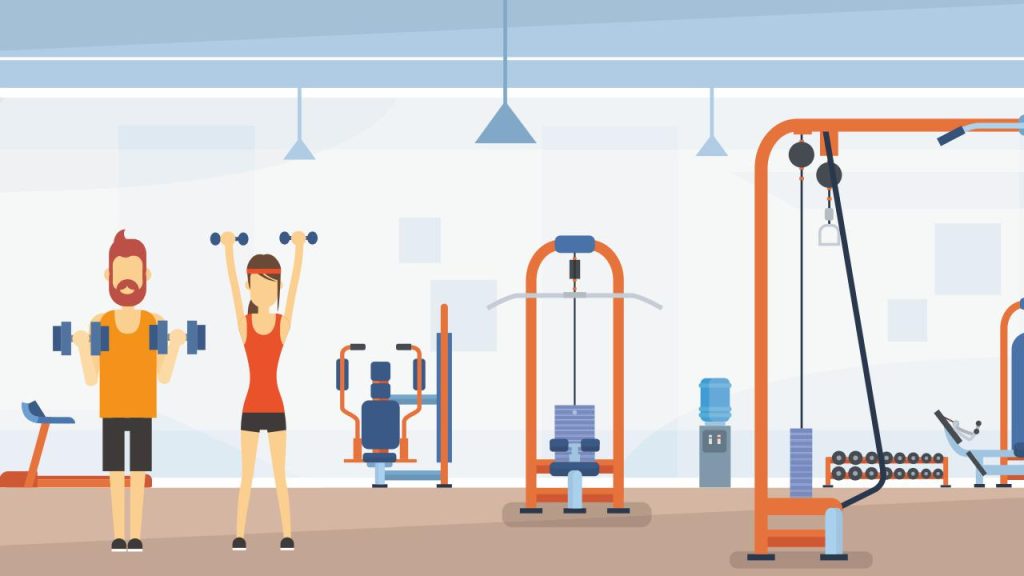Table of Contents
How to Start Exercising: 10 Essential and Powerful Tips for Beginners
If you’ve ever wondered how to start exercising and stick to a fitness routine, you’re not alone. Beginning a fitness routine is one of the best decisions you can make for your long-term health and well-being. It’s not only about improving your physical appearance but also boosting your mental health, energy levels, and overall lifestyle. Whether you’re starting from scratch or looking to re-establish a fitness habit, this comprehensive guide will provide you with powerful tips to kickstart your fitness journey.
1. Set Realistic, Achievable Goals
Goal-setting is an essential part of staying motivated. When thinking about how to start exercising for beginners, it’s important to set goals that are achievable within your current level of fitness. Start small, such as committing to walk 30 minutes a day or working out three times a week. Over time, you can gradually increase the intensity and duration of your workouts.
One effective approach is to set SMART goals — Specific, Measurable, Achievable, Relevant, and Time-bound. For example, instead of saying, “I want to get fit,” try setting a goal like, “I want to be able to jog for 20 minutes without stopping by the end of the month.” Small wins along the way will boost your confidence and keep you on track.
Additionally, check out our article on exercise improving health for more information on the benefits of setting fitness-related goals.
2. Choose Activities That You Enjoy
One of the main reasons people quit exercising is because they choose activities they don’t enjoy. The key to staying consistent is to find physical activities that make you feel good. Don’t limit yourself to traditional gym workouts. Explore different forms of exercise such as hiking, dancing, swimming, yoga, or cycling.
Try experimenting with a few different activities to see what fits your lifestyle and preferences best. If you enjoy being outdoors, perhaps jogging or cycling in a park will suit you. If you prefer group activities, try a fitness class. Choosing activities you like is critical for sticking to a routine, especially for those new to fitness and how to start exercising. A great way to ease into strength training is with resistance bands, like these Fit Simplify Resistance Bands, which offer different levels of resistance as you progress.

3. Start Slow and Gradually Increase Intensity
If you’re just figuring out how to start exercising, it’s crucial to start slow. Jumping into high-intensity workouts too quickly can lead to injury and burnout. Begin with light exercises such as walking, stretching, or low-impact aerobic activities for 20-30 minutes. Over time, as your body becomes more conditioned, you can gradually increase the duration and intensity of your workouts.
For instance, start with walking for 20 minutes a day, and then progress to brisk walking or light jogging. Once you feel comfortable, you can incorporate more challenging exercises like strength training, interval training, or high-intensity cardio.
For a structured beginner workout program, check out our guide on 5 Example of Fitness Workout Program.
4. Balance Cardio, Strength, and Flexibility Training
A well-rounded fitness routine includes three primary components, especially for beginners wondering how to start exercising: cardio, strength training, and flexibility exercises. Each type of exercise serves a different purpose and contributes to overall fitness.
- Cardio exercises (such as running, biking, and swimming) improve heart and lung health, burn calories, and enhance endurance.
- Strength training (such as weight lifting, resistance band workouts, or bodyweight exercises like push-ups) builds muscle, increases metabolism, and strengthens bones.
- Flexibility exercises (such as stretching or yoga) improve range of motion, prevent injuries, and aid in recovery after more intense workouts.
For best results, aim to include all three in your weekly routine. For example, you might do cardio on Monday, Wednesday, and Friday, strength training on Tuesday and Thursday, and yoga or stretching on Saturday. If you’re just getting started on your fitness journey, it’s important to take it slow and set realistic goals. For a more detailed guide on creating an effective routine, visit WebMD’s beginner exercise guide.
5. Develop a Structured Workout Schedule
Consistency is key when it comes to fitness. Creating a structured workout schedule is a game-changer when figuring out how to start exercising consistently. Whether you prefer working out in the morning or evening, set aside a specific time each day to exercise.
If you’re just starting, commit to exercising 3-4 days per week for about 30 minutes per session. As you grow more accustomed to working out, you can gradually increase the number of workout days or extend the duration of your sessions. Some people also find it helpful to schedule workouts at the same time each day to form a habit.
You can also use fitness apps to plan your weekly workouts and set reminders to stay on track.
6. Monitor Your Progress and Celebrate Milestones
Tracking your progress is a great way to stay motivated. When considering how to start exercising, it’s important to log your workouts. Seeing your improvement over time, whether it’s lifting heavier weights, running longer distances, or simply feeling more energetic, will boost your confidence and keep you committed.
Celebrate small milestones along the way. Whether it’s completing your first 5K or reaching a new personal best in weightlifting, acknowledging these wins can help reinforce your dedication.
There are also plenty of fitness apps available that can track your progress, from step counters to heart rate monitors, which can help visualize your progress more clearly. Consider using a fitness tracker like the Fitbit Charge 6 to measure your daily steps and monitor your heart rate during workouts.
7. Focus on Proper Form to Prevent Injury
One of the most important things to learn when thinking about how to start exercising is how to perform exercises with proper form. Poor form, especially in exercises like weight lifting or bodyweight movements, can lead to strains, sprains, and long-term injuries.
If you’re unsure about the correct form for an exercise, don’t hesitate to seek guidance. Consider working with a certified personal trainer, attending group fitness classes, or watching reputable instructional videos. Practicing exercises with proper form from the start will also make your workouts more efficient and rewarding.
8. Prioritize Recovery: Rest Days and Stretching
Exercise stresses your muscles, and while that stress is necessary for growth and strength, recovery is equally important. Adequate rest between workouts helps your muscles repair and grow stronger. It also prevents overtraining, which can lead to burnout or injury. Additionally, Foam Rollers are excellent for muscle recovery. The TriggerPoint GRID Foam Roller is designed for deep tissue massage and muscle recovery, helping to alleviate soreness after workouts. This combination of a yoga mat and foam roller can optimize rest and recovery sessions for beginners.
Knowing how to start exercising is one thing, but understanding the need for recovery is just as critical. Make sure to schedule rest days into your fitness plan, especially if you’re engaging in high-intensity or strength-focused workouts. During these rest days, consider doing light activities like walking, stretching, or yoga to stay active while allowing your body to recover.
9. Nourish Your Body with Proper Nutrition and Hydration
A balanced diet is an essential part of any exercise plan. If you’re learning how to start exercising, remember that nutrition plays a crucial role in fueling your body and aiding in recovery. To fuel your workouts and promote recovery, focus on consuming nutrient-dense foods like lean proteins, complex carbohydrates, and healthy fats.
- Proteins help repair and build muscle tissue. Good sources include chicken, fish, eggs, beans, and Greek yogurt.
- Carbohydrates provide the energy your body needs to sustain workouts. Whole grains, fruits, and vegetables are excellent choices.
- Healthy fats support brain function and help with the absorption of vitamins. Include sources like avocados, nuts, and olive oil.
Additionally, staying hydrated is crucial for maintaining energy levels and preventing dehydration, especially during longer or more intense workouts. Aim to drink plenty of water throughout the day, and consider having a sports drink with electrolytes if you’re exercising for extended periods.
For more nutrition tips, check out our article on Nutrition Health and Fitness Tips.

10. Stay Motivated by Finding an Accountability Partner
Staying motivated over the long term can be challenging. Having an accountability partner or workout buddy can help keep you on track. Whether it’s a workout buddy or an online fitness community, support systems can make a big difference when learning how to start exercising.
If you don’t have a workout buddy, consider joining a fitness class, running group, or online fitness community. Working out with others not only makes exercise more enjoyable but also holds you accountable for showing up and putting in the effort.
Regular exercise isn’t just great for your body—it also has substantial mental health benefits. For more insights, check out this article from the National Institute of Mental Health.
Conclusion:
Beginning a fitness routine can seem daunting, but by following these 10 essential tips, you’ll know exactly how to start exercising in a sustainable, enjoyable way. Set achievable goals, choose fun activities, and maintain a balance between cardio, strength, and flexibility exercises. With consistency, proper recovery, and a focus on nutrition, you’ll soon see improvements in both your physical and mental well-being.






